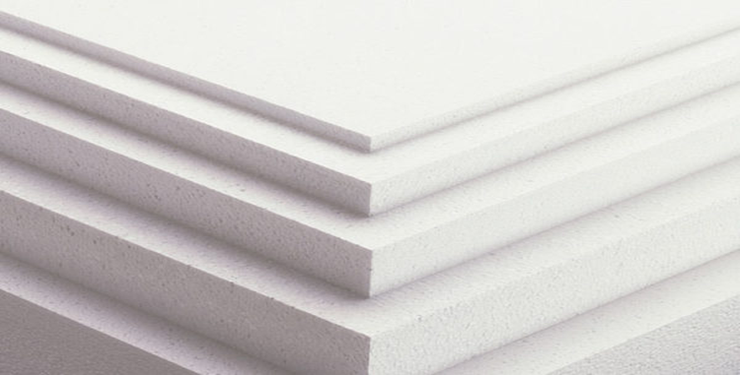Introduction to Rigid Polyurethane Foam
Rigid polyurethane foam stands as one of the most versatile and widely utilized synthetic materials in modern construction and manufacturing. This remarkable polymer-based substance has revolutionized numerous industries with its exceptional insulating properties, structural strength, and adaptability. Developed in the 1940s, rigid polyurethane foam has evolved into an essential component across diverse applications, from building insulation to aerospace engineering.
Chemical Composition and Formation
At its core, rigid polyurethane foam results from a chemical reaction between polyols and isocyanates, typically catalyzed under controlled conditions. When these components combine, they create a three-dimensional polymer structure characterized by closed cells filled with low-conductivity gas. This unique cellular structure is what gives rigid polyurethane foam its remarkable insulating capabilities and lightweight nature.
Unlike flexible polyurethane foams used in cushioning applications, rigid polyurethane foam features a higher percentage of closed cells (typically exceeding 90%), which prevents gas movement and enhances its thermal resistance. The formulation can be precisely adjusted to modify density, cell structure, and mechanical properties, enabling manufacturers to tailor the material for specific applications.
Exceptional Insulating Properties
Perhaps the most celebrated attribute of rigid polyurethane foam is its outstanding thermal insulation performance. With thermal conductivity values ranging from 0.022 to 0.028 W/mK, it ranks among the most efficient insulating materials commercially available. This exceptional performance stems from the trapped low-conductivity gases within its closed-cell structure, which significantly impede heat transfer.
One inch of rigid polyurethane foam provides an R-value (thermal resistance) of approximately 5.5 to 6.5, substantially higher than conventional insulation materials like fiberglass or cellulose. This superior insulating efficiency allows for thinner wall assemblies while achieving better thermal performance, maximizing usable space in building designs.
Construction and Building Applications
In construction, rigid polyurethane foam has transformed insulation practices worldwide. It’s commonly applied as spray foam insulation in walls, roofs, and foundations, creating a seamless thermal envelope that minimizes energy loss. The material’s ability to conform to irregular surfaces and expand to fill cavities results in superior air-sealing properties, addressing thermal bridging challenges that plague traditional insulation methods.
Prefabricated rigid polyurethane foam boards and panels serve as structural insulated panels (SIPs), combining structural support and thermal insulation in a single element. These components expedite construction timelines while delivering exceptional energy efficiency, contributing to sustainable building practices.
Industrial and Commercial Uses
Beyond construction, rigid polyurethane foam finds extensive applications across numerous industries. In refrigeration and cold storage, it forms the insulative core of commercial freezers, refrigerators, and transport containers, maintaining temperature stability while minimizing energy consumption.
The marine industry utilizes rigid polyurethane foam for buoyancy in boat construction and floating docks, leveraging its water resistance and structural stability. In pipeline insulation, it protects against temperature fluctuations while preventing condensation on cold surfaces, extending infrastructure lifespan.
Automotive and Transportation Applications
The automotive sector has embraced rigid polyurethane foam for its lightweight characteristics and energy-absorbing properties. Modern vehicles incorporate this material in bumper systems, interior components, and structural reinforcements to enhance safety while reducing vehicle weight and improving fuel efficiency.
In the aerospace industry, rigid polyurethane foam provides thermal protection and structural reinforcement in aircraft components, where weight reduction directly translates to fuel savings and environmental benefits.
Environmental Considerations
While rigid polyurethane foam delivers substantial environmental benefits through energy conservation in buildings and transportation, its production and disposal present important environmental considerations. Traditional blowing agents used in manufacturing, particularly hydrochlorofluorocarbons (HCFCs) and hydrofluorocarbons (HFCs), have raised concerns regarding ozone depletion and global warming potential.
In response, the industry has developed more environmentally responsible alternatives, including hydrofluoroolefins (HFOs) and water-blown systems that significantly reduce environmental impact. Additionally, research into bio-based polyols derived from renewable resources continues to advance, offering pathways toward more sustainable rigid polyurethane foam production.
End-of-life management remains challenging, as rigid polyurethane foam doesn’t readily biodegrade. However, emerging technologies for chemical recycling and repurposing of polyurethane waste show promise for creating more circular material flows.
Future Innovations and Developments
The rigid polyurethane foam industry continues to evolve through innovation and technological advancement. Current research focuses on enhancing fire resistance without environmentally harmful flame retardants, improving long-term thermal performance, and developing effective recycling methodologies.
Nanotechnology integration promises to create next-generation rigid polyurethane foams with enhanced structural properties and even better insulating capabilities. Meanwhile, digitalization in manufacturing enables precise control over cell structure and material properties, further expanding application possibilities.
Conclusion
Rigid polyurethane foam represents a remarkable achievement in materials science, delivering exceptional performance across diverse applications. Its unparalleled combination of thermal efficiency, structural integrity, and versatility continues to make it indispensable in construction, transportation, and industrial sectors. As research advances and environmental considerations drive innovation, rigid polyurethane foam will likely remain at the forefront of sustainable material solutions, evolving to meet the changing demands of modern society while addressing critical environmental challenges.
